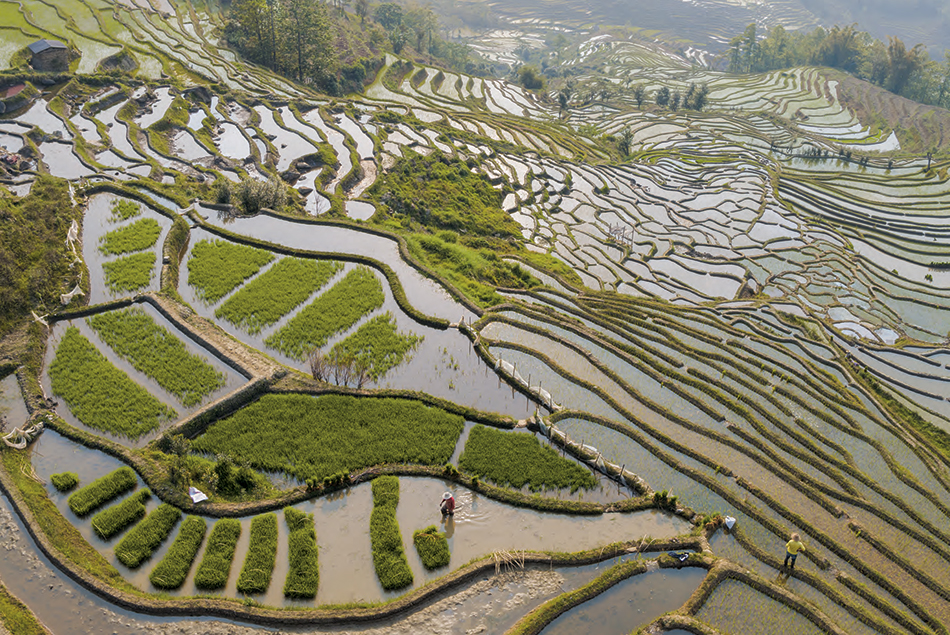PHOTOGRAPHY China is changing its eating habits, transforming the entire global agriculture

Seeing Jiang Wannian and Ping Cuixiang gathering radish seeds on one and a half hectares of land in the northern-central Gansu is a bit like going back in time.
On a bricked open space in a dry valley surrounded by dark mountains, Jiang passes with the rusty tractor over a pile of dried plants; in the meantime, his wife, Ping, settles the litter with a handmade pitchfork. Dry physique and leather-colored leather, the two then continue side by side; It's very hot, but they're both intabarrati to protect themselves from the sun and dust. Throwing the chaff into the air, they turn up their beautiful faces, pulled and marked by years of work in the open air, and watch a rain of reddish seeds fall.
They continue like this for hours. Ping encourages the wind, murmuring in a sing-song voice: "Blow, blow!". A car would do everything in a few minutes, but Jiang and his wife can not afford it and therefore thresh by hand, as was used a few centuries ago.
Jiang and Ping represent one of the many stories of China and its farms, over 90 percent of which does not reach one hectare; Chinese farms are on average among the smallest in the world. But there are also different stories.
In forty years, China has caught up with the agricultural progress that the Western world has accomplished over 150 years, and not only: it has reconfigured the whole system.
Today in China all types of agriculture are practiced at the same time: family-run; industrial, in the big and glittering factories and for the processing of meat; sustainable in high-tech and even organic farms in urban gardens.